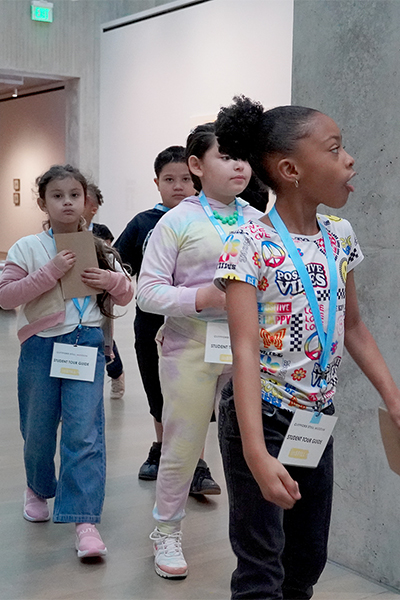This improv-inspired game is a way to get students to share observations about a painting while building on what others are saying. Students will be looking closely, collaborating, listening, and connecting to each other’s ideas.
Time: 5-10 mins
Materials:
- Selection artworks for students to examine
- Choose from our online collection
Preparation:
Put students at ease by reminding them that there are no wrong answers when sharing their opinions about art.
Choose a selection of artworks that you know will create a robust discussion-you know your students best!
Steps:
- This activity can be done in pairs, small groups, or a large group. You might do a round as a large group, then pair students up for additional discussions.
- Invite students to examine an artwork. Give students a few minutes to silently look while taking note of all the things they are noticing. Students may want to write down their observations to help them remember.
- Explain that students are going to take turns describing the painting, but that each comment must first acknowledge and then build upon the comment before it. For example, a conversation may go:
- Participant 1: “I see a burned tree trunk.”
- Participant 2: “Yes, and I see the lightning bolt that started the fire.”
- Participant 3: “Yes, and I see the the fire spreading.”
- Participant 4: “ Yes, and I see the smoke rising from the flames.”
- If doing this as a group activity, students could popcorn out ideas while the teacher or a designated student keeps track of the group’s thinking. In pairs, students should take turns adding to each other’s ideas.
- Repeat the activity with another artwork or have students switch groups.
Variations:
- After doing this activity in pairs, students could team up with another pair of students to teach them about the painting they examined.
- Challenge students to do this activity with the same painting multiple times, with different students starting the conversation. Did you notice new or different things?
- Invite students to tell a story about a painting one sentence at a time. Students must listen and connect to the sentence that came before, while continuing to move the story forward.

